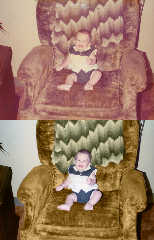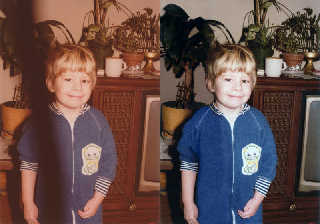|
 |
Invisible wrote:
> Mike Raiford wrote:
>
>> I'll agree, Windows 3.x sucked. :)
>
> I was always astounded that "66 MHz" PCs would crawl along unbearably
> slowly while my little "14 MHz" Amiga 1200 ran rings around them. It
> wasn't until I started doing seriously compute-bounded work that I
> actually *believed* that the numbers weren't lying. The Amiga just
> seemed dramatically faster in every respect.
>
> (On the other hand... You know how Linux is supposed to be "fast"? I
> tried running Debian on my Amiga 1200. Waiting for Gnome to start up
> is... well let me put it this way. It makes a 486 SX look like greased
> lightning. From typing "startx" to having a usable desktop takes about
> 20 *minutes*!! Not kidding!!)
>
>>> (Bearing in mind, my first ray-traced scene - a mesh torus with a
>>> procedural wood texture and one light source - took well over 2
>>> *hours* to render at 320x200 pixels. What can I say? No FPU...)
>>
>> POV-Ray was why I sought to by a math-coprocessor. Remarkable speed up
>> of that app. ;)
>
> Oh hell yeah. I can remember adding a 20 MHz FPU to my Amiga and
> watching Fractuallity suddenly get an order of magnitude faster. ;-)
> "Wow, it's so fast!" I cried.
>
> Watching it yesterday, with FPU and all, there didn't seem to be much
> "fast" about it!
>
>>> In fact, it seems that only high-end, professional audio and video
>>> tools actually cost money any more. (I'm thinking... Cubase,
>>> Cakewalk, Photoshop, Renderman, and so forth.)
>>
>> If you've ever really used Photoshop, some things that are trivial to
>> do in that program all the sudden become very difficult in other
>> programs.
>
> I'm sure. (E.g., colour seperations...)
>
>> Remember that video you posted on the making of that webcomic. That
>> was PS.
>
> I own Photoshop Elements now. It's not very impressive.
>
PS Elememts is ... meh .. It lacks some key features, such as Masking.
Hell... lacking that alone is grounds for death IMO. You're better of
with GIMP. ;)
>> I've taken old faded pictures (some with missing pieces, where the
>> emulsion was scratched or torn away) and brought them back to their
>> original color, replaced the missing pieces, and got rid of the texture.
>
> I have no idea how that's even theoretically possible.
>
Depends. Small tears and missing chunks are really easy using clone and
heal tools. Larger tears and missing chunks require a more "creative"
approach. See the attached images.
>> There are advantages to the expensive packages ;)
>
> I won't deny that. ;-)
>
>>> Today, anybody with sufficient technical bent can easily sit down
>>> with a computer and cut CDs of their music, or burn DVDs of their
>>> graphics and animations. It's not even expensive any more.
>>
>> Heck. You can do this for free, too ;)
>
> Not really. You still have to buy the PC. :-P
>
Well, assuming you already have the PC... If you don't you can still
accomplish your goal for under $1000.
I've seen someone actually make a pretty impressive short film using
Windows Movie Maker and a $50 pocket camera.
Post a reply to this message
Attachments:
Download '003banda.jpg' (144 KB)
Download 'banda7.jpg' (145 KB)
Preview of image '003banda.jpg'

Preview of image 'banda7.jpg'

|
 |




![]()